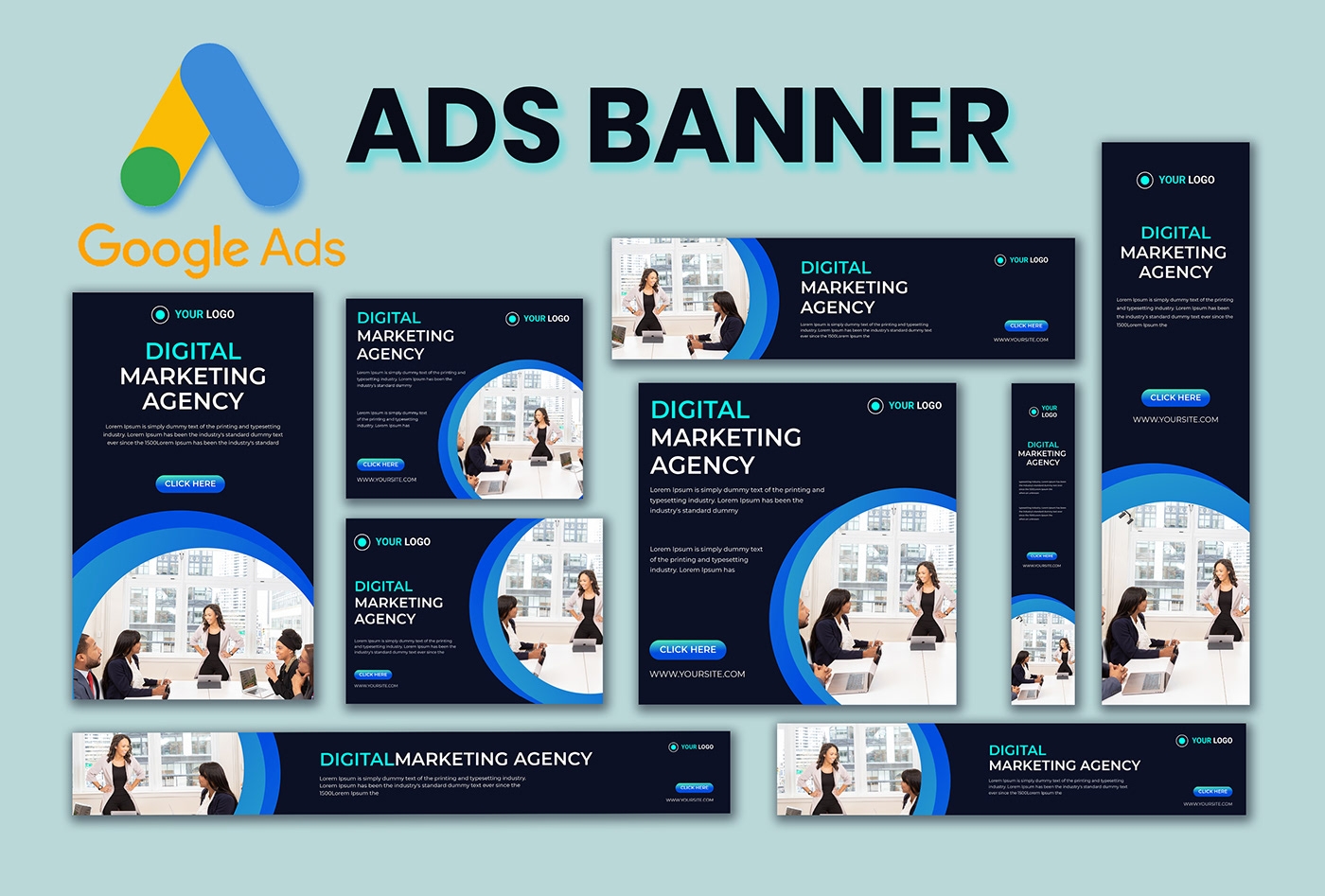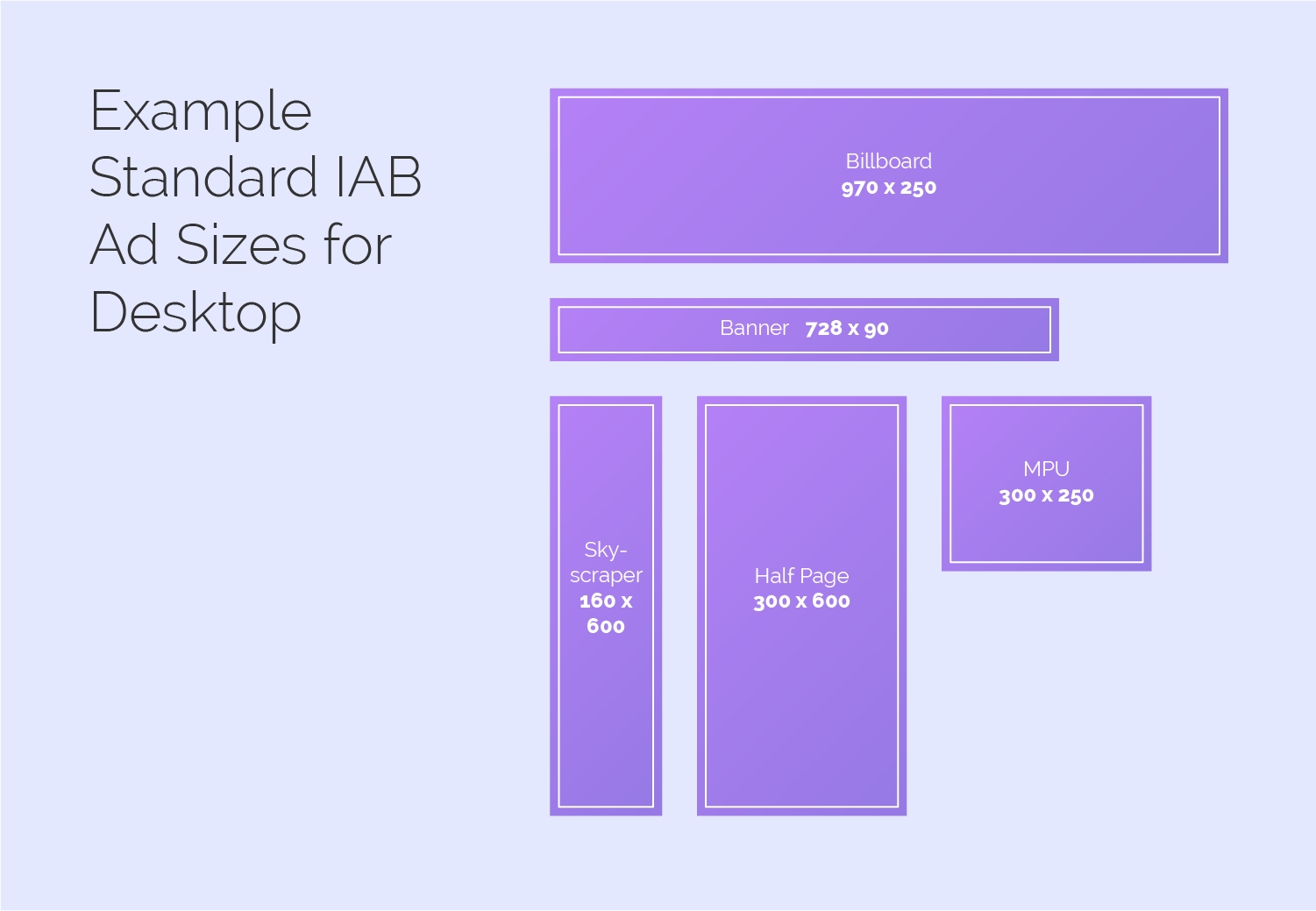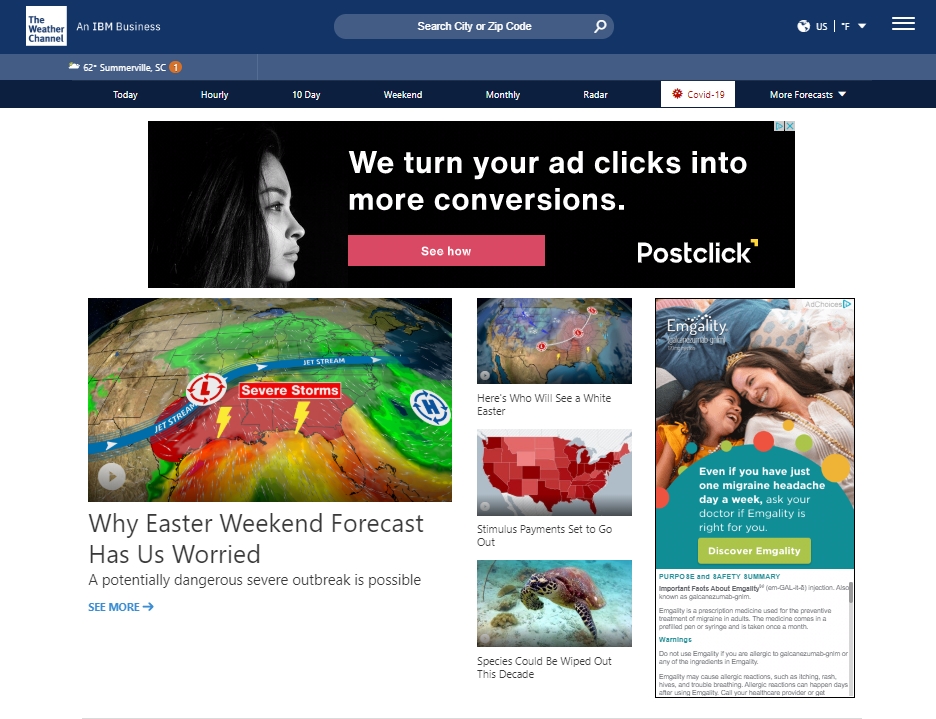Exploring the Effectiveness of Display Banner Ads in Modern Advertising Strategies
Banner ads have seen a decline in effectiveness due to various factors such as low click-through rates (CTR), ad blockers, and trust issues
Buy CPC Traffic | Buy Display Ads | Exclusive traffic sources | Buy Push Ads | Popunder ADS | Buy Native Ads | Buy Preroll Ads

Buy CPC Traffic | Buy Display Ads | Exclusive traffic sources | Buy Push Ads | Popunder ADS | Buy Native Ads | Buy Preroll Ads
Display banner ads are a popular form of online advertising that utilizes visually appealing graphics to grab the attention of website visitors. These ads are typically placed strategically on websites, targeting specific audiences to maximize their effectiveness. The use of display banner ads has become a common practice for businesses looking to increase brand awareness and drive traffic to their websites.
One of the main advantages of display banner ads is their ability to instantly capture the attention of users. With eye-catching graphics, animations, and videos, these ads can quickly convey a brand's message and leave a lasting impression on potential customers. Display banner ads are also highly customizable, allowing businesses to create ads that align with their branding and marketing objectives.
Furthermore, display banner ads are advantageous due to their wide reach across different websites and platforms. Advertisers can leverage ad networks and programmatic advertising platforms to display their ads on various websites, ensuring that their message reaches a large and diverse audience. This approach allows businesses to target specific demographics and interests, increasing their chances of connecting with their target audience.
In conclusion, display banner ads are an effective and popular form of online advertising. With their visually appealing graphics and strategic placement, they can help businesses increase brand awareness and attract potential customers. By leveraging the power of display banner ads, businesses can create impactful advertising campaigns and achieve their marketing objectives.
Why Display Banner Ads Matter

Display banner ads play a crucial role in today's digital marketing landscape. With the evolution of the internet and the rise of social media, businesses are finding it increasingly important to engage with their target audience online. Display banner ads provide an effective way to reach potential customers and promote brand awareness.
Capturing Attention
One of the main reasons why display banner ads matter is their ability to capture attention. By utilizing visually appealing designs and compelling messages, banner ads can instantly attract users' attention and generate interest. These ads leverage the power of visual storytelling to communicate with users and make a lasting impression.
The strategic placement of display banner ads on relevant websites increases their visibility and enables businesses to reach a wider audience, including users who may not yet be familiar with the brand. This exposure helps to increase brand awareness and can lead to more website visits, conversions, and customer acquisitions.
Driving Traffic and Sales
Display banner ads also play a crucial role in driving traffic and boosting sales. They provide businesses with the opportunity to showcase their products or services, highlight special promotions, and encourage users to take action. By including a compelling call-to-action (CTA) in the banner ad, businesses can effectively guide users towards their desired goal, such as making a purchase or signing up for a newsletter.
Furthermore, display banner ads can be optimized for targeting specific demographics, interests, and geographic locations. This targeting capability allows businesses to reach their ideal customers and increase the likelihood of conversions. By displaying relevant ads to the right audience, businesses can maximize their return on investment and achieve higher conversion rates.
In conclusion, display banner ads are a valuable tool for businesses seeking to create brand awareness, drive traffic, and increase sales. These ads offer an engaging and visually appealing way to capture users' attention and guide them towards desired actions. By leveraging the power of display banner ads, businesses can achieve their marketing goals and stay ahead in the competitive digital landscape.
The Benefits of Display Ads

Display ads have become an essential part of online advertising strategies. By leveraging the visual power of images and graphics, display ads are effective in capturing users’ attention and driving engagement. Here are some of the key benefits of display ads:
Increased Brand Visibility: Display ads allow brands to reach a wider audience by appearing on multiple websites and platforms. They provide an opportunity to showcase a brand’s logo, message, and visual identity to potential customers.
Targeted Reach: With display ads, brands have the ability to target specific demographics, interests, and behaviors. This helps in reaching the right audience and driving more relevant traffic to a website.
Higher Click-Through Rates: Display ads tend to have higher click-through rates compared to other forms of online advertising. The visually appealing nature of display ads attracts users’ attention and compels them to click on the ad.
Retargeting Opportunities: Display ads also enable brands to retarget users who have previously engaged with their website or showed interest in their products. This increases the chances of conversions and sales.
Flexible Ad Formats: Display ads come in various formats, including static banners, animated gifs, and rich media ads. This allows brands to choose the format that best suits their campaign goals and creative vision.
Measurable Results: Display ad campaigns can be easily tracked and measured using analytics tools. Brands can monitor impressions, clicks, conversions, and other key metrics to evaluate the success of their ad campaigns.
In conclusion, display ads offer a range of benefits for brands looking to promote their products or services online. By leveraging the power of visuals and targeting capabilities, display ads can significantly enhance brand visibility, drive engagement, and increase conversions. To learn more about display ads, click here.
How Display Ads Work
Display ads are a popular form of online advertising that appear on websites and mobile apps in the form of banners, images, videos, or other interactive media. These ads are designed to catch the attention of users and promote a product or service.
When you visit a website or use a mobile app, the website or app owner may have partnered with an advertising network, such as TrafficStars, to display ads on their platform. The advertising network acts as a middleman between the advertisers and the website or app owners.
Advertisers create display ads and submit them to the advertising network. These ads can be targeted to specific demographics, interests, or locations to ensure that they reach the right audience. The advertising network then uses various targeting technologies, such as cookies or browsing behavior analysis, to deliver the ads to the appropriate users.
When a user loads a webpage or opens a mobile app, the advertising network's technology determines which ads to display based on the targeting criteria. The ads are then dynamically inserted into the webpage or app, usually in designated ad slots.
When a user interacts with a display ad, they may be redirected to the advertiser's website or landing page. The user can then learn more about the product or service being advertised and potentially make a purchase or take another desired action.
Benefits of Display Ads
Display ads offer several benefits for advertisers:
Increased brand visibility: Display ads can expose a brand to a large audience and help increase brand awareness.
Precise targeting: Advertisers can target specific audiences based on demographics, interests, browsing behavior, and more.
Flexibility in ad formats: Display ads can be customized with various formats, including images, videos, and interactive media.
Measurable results: Advertisers can track key metrics, such as impressions, clicks, conversions, and return on investment, to measure the success of their campaigns.
In conclusion, display ads are an effective way for advertisers to promote their products or services to a targeted audience. By utilizing the services of an advertising network, advertisers can reach a wide range of websites and mobile apps, ensuring that their ads are seen by the right people.
Types of Display Ads
Display advertising offers various types of ads that can help businesses reach their target audience and promote their products or services effectively. Here are some common types of display ads:
1. Banner Ads

Banner ads are one of the most popular types of display ads. They are placed on websites and come in different sizes and formats. Banner ads often feature a combination of text, images, and sometimes interactive elements to attract the attention of users.
2. Pop-up Ads

Pop-up ads are displayed in separate windows that open on top of a website, interrupting the user's browsing experience. These ads can be highly effective as they demand immediate attention and can elicit quick responses from users.
3. Video Ads
Video ads are displayed as videos within online content, such as websites or streaming platforms. They can be in the form of pre-roll ads that play before the main content, mid-roll ads that appear during the video, or post-roll ads that play after the video has ended.
4. Native Ads

Native ads are designed to blend in with the surrounding content of a website, making them less intrusive and more engaging for users. They match the design and format of the website or app, providing a seamless and less disruptive advertising experience.
5. Interstitial Ads
Interstitial ads are full-screen ads that appear before or after certain events, such as when a user transitions between different app screens or webpages. They provide advertisers with the opportunity to present their message in a more immersive and attention-grabbing way.
6. Rich Media Ads
Rich media ads are highly interactive and engaging ads that go beyond traditional static formats. They can include features such as videos, animations, games, quizzes, or other interactive elements to capture the audience's attention and deliver a memorable brand experience.
These are just a few examples of the types of display ads available. Advertisers can choose the most suitable format based on their goals, target audience, and budget to maximize the impact of their advertising campaigns.
Best Practices for Display Ads
Display ads are an effective way to promote your brand, products, or services online. To ensure the success of your display ad campaign, it's important to follow these best practices:
1. Define Your Target Audience

Before creating your display ads, it's crucial to clearly define your target audience. Understand their demographics, interests, and behaviors to create ads that resonate with them.
2. Use Eye-Catching Design
Design visually appealing display ads that grab the attention of your target audience. Use high-quality images, vibrant colors, and engaging typography to make your ads stand out.
3. Keep it Simple
Avoid cluttering your display ads with too much information. Keep the message simple, concise, and focused on the key benefit you want to communicate to your audience.
4. Use Strong Call-to-Action
Include a clear and compelling call-to-action in your display ads. Encourage your audience to take the desired action, such as clicking on the ad or making a purchase.
5. Optimize for Mobile
With the increasing use of smartphones and tablets, it's essential to optimize your display ads for mobile devices. Ensure that your ads are responsive and easily accessible on smaller screens.
6. Test Multiple Variations
Run A/B tests with different variations of your display ads to determine which ones perform best. Test different headlines, images, colors, and call-to-action buttons to improve your ad's effectiveness.
7. Track and Analyze Performance
Regularly track and analyze the performance of your display ads. Use analytics tools to measure impressions, clicks, conversions, and other important metrics. Identify areas for improvement and make adjustments accordingly.
By following these best practices, you can create display ads that effectively engage your target audience and drive desired results for your business.
Targeting Strategies for Display Ads

Targeting is a crucial aspect of display advertising as it allows advertisers to reach their intended audience effectively. By utilizing different targeting strategies, advertisers can ensure that their ads are shown to the right people at the right time. Here are some targeting strategies commonly used in display advertising:
1. Demographic Targeting: This strategy involves targeting users based on their age, gender, income, education, and other demographic factors. It helps advertisers tailor their ads to specific groups of people who are more likely to be interested in their products or services.
2. Geographic Targeting: With geographic targeting, advertisers can display their ads to users in specific locations. This strategy is particularly useful for businesses that operate in specific regions or countries and want to target their advertising efforts accordingly.
3. Behavioral Targeting: Behavioral targeting involves targeting users based on their online behavior, such as browsing history, search queries, and purchase intent. By analyzing user behavior, advertisers can show ads that are highly relevant to their interests and preferences.
4. Contextual Targeting: Contextual targeting focuses on placing ads on websites or web pages that are contextually relevant to the advertiser's products or services. It ensures that the ads are shown to users who are likely to be interested in the content they are viewing.
5. Retargeting: Retargeting is a strategy that allows advertisers to show ads to users who have previously interacted with their website or mobile app. By tracking user behavior, advertisers can serve personalized ads to users who have shown interest in their products or services.
In conclusion, targeting strategies play a crucial role in the success of display advertising campaigns. By utilizing the right combination of targeting strategies, advertisers can optimize their ad reach and increase the effectiveness of their campaigns.
Design Tips for Effective Display Ads
Display ads are a powerful way to promote your brand and reach a wider audience. However, to make your ads effective, it is important to consider the design. Here are some design tips for creating impactful display ads:
1. Keep it Simple
One of the most important design tips for display ads is to keep it simple. Avoid cluttering the ad with too much text or images. Instead, focus on a clear and concise message that grabs the viewer's attention. Use minimalistic design elements and whitespace to make the ad visually appealing.
2. Use Vibrant Colors
Colors play a vital role in attracting and retaining attention. Choose a color scheme that aligns with your brand and grabs the viewer's attention. Use vibrant colors strategically to highlight important elements like call-to-action buttons, product images, or discounts. However, make sure the colors you choose are visually pleasing and do not clash with each other.
3. Optimize for Mobile

With the majority of internet users accessing the web on their mobile devices, it is crucial to optimize your display ads for mobile screens. Make sure your ad is responsive and adapts seamlessly to different screen sizes. Use large fonts, clear images, and easy-to-click buttons to provide a seamless user experience on mobile devices.
4. Incorporate High-Quality Images
Visuals have a strong impact on the viewer's perception of your brand. Incorporate high-quality images that are relevant to your product or service. Make sure the images are clear, crisp, and visually appealing. Avoid using stock photos that look generic or unoriginal. Instead, invest in professional photography or create custom graphics to make your ads stand out.
5. Use Compelling Copy
The copy in your display ad should be persuasive and compelling. Use concise and impactful language to convey your message effectively. Highlight the benefits of your product or service and create a sense of urgency with call-to-action phrases. Keep the text short and to the point, focusing on key selling points.
6. Test and Iterate
Designing effective display ads requires constant testing and iteration. Experiment with different design elements, such as colors, fonts, images, and ad sizes to see what works best. Monitor the performance of your ads and make adjustments based on the data. Continuously test and optimize your ads to improve their effectiveness and maximize your ROI.
By following these design tips, you can create visually appealing and effective display ads that grab attention, convey your message, and drive conversions for your brand.
Measuring Success with Display Ads

Measuring the success of display ads is crucial in order to determine their effectiveness and make informed decisions for future advertising campaigns. Here are some key metrics to consider when evaluating the success of your display ads:
Impressions: This metric measures how many times your ad was viewed by users. It gives you an indication of the reach of your ad campaign.
Click-through rate (CTR): CTR calculates the percentage of users who clicked on your ad out of the total number of impressions. It is a good indicator of how engaging and compelling your ad is.
Conversion rate: Conversion rate measures the percentage of users who completed a desired action, such as making a purchase or filling out a form, after clicking on your ad. It helps you evaluate the effectiveness of your ad in driving conversions.
Cost per acquisition (CPA): CPA calculates the average cost of acquiring a customer through your display ad campaign. It helps you understand the cost-effectiveness of your advertising efforts.
Return on investment (ROI): ROI measures the profitability of your display ad campaign by comparing the amount of money you made from the campaign to the amount of money you spent on it. It helps you determine the overall success of your ad campaign.
Tracking and analyzing these metrics can provide valuable insights and help you optimize your display ad campaigns. By monitoring and adjusting your strategies based on the data, you can improve the performance and effectiveness of your display ads, ultimately driving better results and achieving your advertising goals.
Common Mistakes to Avoid with Display Ads
Display advertising is an effective way to reach a wide audience and increase brand visibility. However, it is important to be mindful of certain mistakes that can undermine the success of your display ad campaigns.
1. Poor Design

One common mistake with display ads is poor design. A cluttered or unattractive ad can fail to catch the viewer's attention and may even drive them away. It is important to create visually appealing ads that are consistent with your brand's identity. Use eye-catching images and clear messaging to engage your target audience.
2. Incorrect Targeting
Another mistake to avoid is incorrect targeting. Display ads should be shown to the right audience to maximize their effectiveness. If your ads are reaching people who have no interest in your products or services, you are wasting your resources. Take time to define your target audience and choose the appropriate targeting options to improve your ad's relevancy.
3. Lack of Call-to-Action

A common mistake is the lack of a clear call-to-action (CTA) in display ads. Without a clear CTA, viewers may not know what steps to take after seeing your ad. Include a compelling and actionable CTA that encourages viewers to click through to your website, sign up for a newsletter, or make a purchase. The CTA should be prominent and easy to understand.
4. Ignoring Ad Performance Metrics
One important mistake to avoid is ignoring ad performance metrics. It is essential to track and analyze the performance of your display ads to understand what is working and what needs improvement. Pay attention to metrics such as click-through rates, conversions, and engagement rates. Use this data to optimize your ads and make data-driven decisions for future campaigns.
5. Disregarding Mobile Optimization
In today's mobile-first world, it is crucial to optimize display ads for mobile devices. Many users consume digital content on their smartphones and tablets, so your ads must be mobile-friendly and responsive. Test your ads on different devices and screen sizes to ensure they render properly and provide a seamless user experience.
Poor Design
Low engagement, loss of viewers
Create visually appealing and consistent ads
Incorrect Targeting
Wasted resources, low conversion rates
Define target audience and choose appropriate targeting options
Lack of Call-to-Action
No clear next steps for viewers
Include a prominent and actionable CTA
Ignoring Ad Performance Metrics
No insights for optimization
Track and analyze ad performance data
Disregarding Mobile Optimization
Poor user experience on mobile devices
Test and optimize ads for mobile
Avoiding these common mistakes can help you create effective display ads that drive results. Take the time to plan and execute your campaigns carefully, and continuously monitor and optimize your ads for optimal performance.
Display Ads vs. Search Ads
Display ads and search ads are two common forms of online advertising, but they differ in terms of their purpose, placement, and targeting methods.
Purpose:
Display ads are primarily used to raise brand awareness and promote products or services. They are visual ads that appear on websites and mobile apps, usually in the form of banners or pop-ups. Display ads are effective for reaching a wide audience and generating interest in a brand or product.
Search ads, on the other hand, are designed to capture the attention of users who are actively searching for specific keywords or phrases. These ads appear on search engine results pages (SERPs) and are triggered by the user's search query. The main goal of search ads is to drive targeted traffic to a website and increase conversions.
Placement:
Display ads can be placed on a variety of websites, online platforms, and mobile apps that have opted to display ads from ad networks or publishers. They can be targeted based on the website content, user demographics, or browsing behavior. Display ads often appear alongside relevant content, such as articles or videos, or on sidebars and header sections of a webpage.
Search ads, as mentioned earlier, appear on search engine results pages. They are displayed either at the top or bottom of the page, designated as "Sponsored" or "Ad." The placement of search ads depends on the relevancy and bid of the advertiser. These ads are shown based on the user's search query and the keywords targeted by the advertiser.
Targeting Methods:
Display ads utilize different targeting methods, such as demographic targeting, contextual targeting, and behavioral targeting. Advertisers can specify the age, gender, location, or interests of their target audience. Contextual targeting matches ads to relevant website content or keywords. Behavioral targeting analyzes user behavior and displays ads based on their browsing history and preferences.
Search ads primarily rely on keyword targeting. Advertisers select relevant keywords or phrases that trigger their ads to appear on search engine results pages. They can also use negative keywords to exclude their ads from showing for certain search queries. Additionally, advertisers can set bid amounts for each keyword to determine the position and frequency of their ads.
In conclusion, display ads and search ads have different purposes, placements, and targeting methods. Display ads focus on raising brand awareness and are placed on websites and mobile apps, while search ads aim to capture active users searching for specific keywords and appear on search engine results pages. Both forms of advertising can be effective when used strategically and tailored to the goals of the advertiser.
Display Ads and Retargeting
Display ads, also known as banner ads, are a popular form of online advertising that appears on websites, mobile apps, and social media platforms. These ads are visual and typically include images, text, and sometimes, animation or video.
Retargeting, also known as remarketing, is a technique used by advertisers to show display ads specifically to users who have already interacted with their brand or website. This strategy aims to re-engage users who have previously shown interest in the brand, product, or service.
Retargeting works by placing a small piece of code, also known as a pixel, on the advertiser's website or landing page. This pixel tracks users' activities, such as the pages they visit or the actions they take on the website. Based on this information, the advertiser can then show targeted display ads to these users as they browse other websites or use social media platforms.
One of the main benefits of display ads and retargeting is their ability to reach a highly relevant audience. By targeting users who have already shown interest in the brand, retargeting can significantly increase the chances of conversion and generate higher ROI compared to traditional display advertising.
Furthermore, display ads and retargeting can also help create brand awareness and reinforce brand messaging. By appearing on multiple platforms and reaching users across different websites, apps, and social media platforms, advertisers can increase their brand's visibility and leave a lasting impression on users.
When developing a display ad and retargeting strategy, it is important to consider factors such as audience segmentation, ad design, and ad placement. Advertisers should also regularly analyze and optimize their campaigns to ensure maximum effectiveness and efficiency.
Key Benefits of Display Ads and Retargeting:
1. Increased relevance and targeting
2. Higher chances of conversion
3. Improved brand awareness
4. Multi-platform visibility
5. Opportunity for optimization and analysis
The Future of Display Ads
Display ads have been a popular form of online advertising for many years. However, as technology continues to evolve, so does the future of display ads. In the coming years, we can expect to see several exciting developments in the world of display advertising.
One major trend that will shape the future of display ads is personalization. As data collection and analysis techniques become more advanced, advertisers will be able to deliver highly targeted and relevant ads to individual users. This means that instead of bombarding users with generic ads, advertisers will be able to tailor their messages based on a user's preferences, interests, and behaviors.
Another important development in the world of display ads is the rise of native advertising. Native ads are designed to seamlessly blend in with the content in which they are placed, making them less intrusive and more engaging for users. As users become more savvy and resistant to traditional banner ads, native ads offer a way for advertisers to capture their attention in a more subtle and effective way.
Mobile advertising is also set to play a major role in the future of display ads. With the increasing use of smartphones and tablets, advertisers will need to adapt their strategies to reach users on these devices. Mobile display ads will need to be optimized for smaller screens and take advantage of mobile-specific features such as location-based targeting and interactive features.
Finally, the future of display ads will also be shaped by emerging technologies such as augmented reality (AR) and virtual reality (VR). These technologies have the potential to completely transform the way users interact with ads. Imagine being able to try on clothes or test drive a car without leaving your home, all through an interactive display ad. As AR and VR continue to develop and become more accessible, we can expect to see more immersive and engaging display ads.
In conclusion, the future of display ads is an exciting one. With advancements in personalization, the rise of native advertising, the growth of mobile advertising, and the emergence of new technologies, display ads will become more targeted, engaging, and interactive than ever before.
Targeted and relevant ads based on user preferences
Less intrusive and more engaging for users
Optimized for smaller screens and mobile-specific features
More immersive and interactive display ads
What are display banner ads?
Display banner ads are a type of online advertising that appears in the form of a graphical banner on a website. They are designed to attract the attention of the website visitors and promote a specific product or service.
How do display banner ads work?
Display banner ads work by using visual graphics and text to attract the attention of website visitors. When a user clicks on the banner ad, they are usually redirected to the advertiser's website or a specific landing page where they can learn more or make a purchase.
What are the benefits of using display banner ads?
There are several benefits of using display banner ads. They can help increase brand awareness, drive traffic to a website, and generate leads or sales. They also allow for targeting specific audiences and can be easily tracked and measured for effectiveness.
How can I create effective display banner ads?
To create effective display banner ads, it's important to have a clear and concise message, use eye-catching visuals, and include a compelling call-to-action. It's also important to consider the placement and targeting of the ads to ensure they reach the right audience.
What are some common sizes for display banner ads?
Some common sizes for display banner ads include 728x90 pixels (leaderboard), 300x250 pixels (medium rectangle), 160x600 pixels (wide skyscraper), and 336x280 pixels (large rectangle). However, the specific sizes may vary depending on the advertising platform or website.
What are display banner ads?
Display banner ads are a type of online advertisement that consists of an image or graphic displayed on a webpage. They are usually rectangular or square in shape and can be found on various websites.
How do display banner ads work?
Display banner ads work by advertisers buying ad space on websites and placing their ads in the designated spaces. When a user visits a website that has banner ads, the ads are loaded and displayed on the page. Advertisers typically pay for banner ads based on impressions or clicks.
What are the advantages of using display banner ads?
There are several advantages to using display banner ads. They can help increase brand awareness, reach a wider audience, and drive traffic to a website. They also provide a visual and eye-catching way to promote products or services and can be easily targeted to specific demographics or interests.
What are some common sizes for display banner ads?
Some common sizes for display banner ads include 300x250 pixels (medium rectangle), 728x90 pixels (leaderboard), and 336x280 pixels (large rectangle). However, there are many other sizes available, and the best size to use depends on the specific website and placement.
Buy CPC Traffic | Buy Display Ads | Exclusive traffic sources | Buy Push Ads | Popunder ADS | Buy Native Ads | Buy Preroll Ads
2022-2024 @ Display banner ads
Last updated